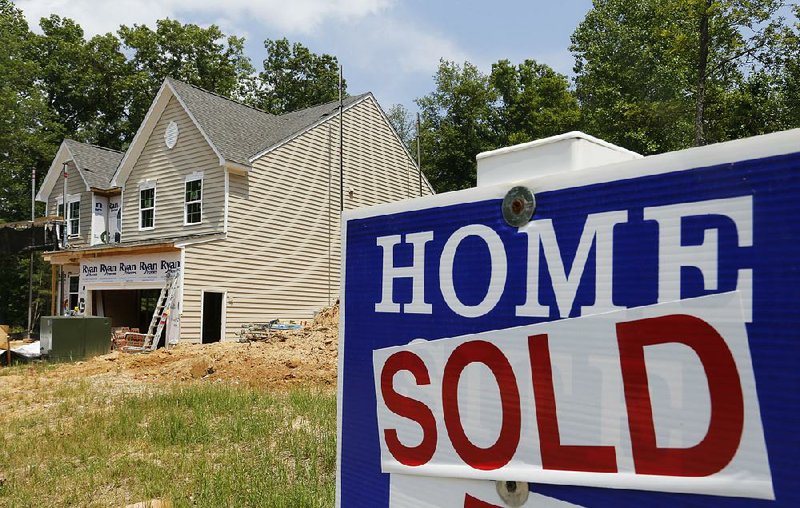WASHINGTON -- Sales of new homes fell sharply in September to the slowest pace in 10 months, as higher prices and slower overall economic growth weigh on the housing market.
The Commerce Department said Monday that new-home sales slumped 11.5 percent last month to a seasonally adjusted annual rate of 468,000, the lowest level since November of 2014. September's drop ended a two-month streak of accelerating sales.
Americans' desire for new houses took off this year -- yet now appears close to having topped out. Solid hiring over the past three years has improved many family balance sheets, while rising home prices have returned equity to current homeowners now seeking to upgrade to new residential developments. Sales of new homes have risen 17.6 percent during the first nine months of 2015.
But global pressures began to exert a downward pull on economic growth in recent months. Those pressures could be spread to the housing market if the drop in sales of new homes leads to a decline in construction.
"A stronger pace of sales will need to be seen for the recent stronger pace of single-family housing starts to be sustained," said Ted Wieseman, an economist at Morgan Stanley.
Job gains slowed in September, while profit margins for many of the largest U.S. businesses with global footprints stopped growing. The stronger dollar has punished exports abroad, and cheaper oil prices have forced energy firms to cut workers and slash orders for pipeline and equipment.
The slowdown has yet to hit sales of previously owned homes as drastically, but the September pullback in newly built properties was severe.
Purchases of new homes slid in the Midwest, South and West, but fell 61.8 percent in the Northeast.
Prices have climbed sharply as well, making new construction less affordable for would-be buyers. The median new-home sales price has jumped 13.5 percent from a year ago to $296,900.
"We assume credit availability remains a major problem for the market," said Mike Englund, chief economist at Action Economics LLC in Boulder, Colo., who is among the best forecasters of new-home sales over the past two years, according to data compiled by Bloomberg. Overall, "we see a broad, slow but positive growth pace for the housing sector."
The housing market has advanced since the recession, although it has yet to fully recover from the bursting of the housing bubble and the 2008 financial crisis. Sales of new homes remain below the 52-year historic average of 655,200.
The drop in sales increases the supply of new homes on the market. The Commerce Department said 5.8 months' supply of homes were available at the end of September, compared with 4.9 months a month ago.
Still, inventories are tight across the housing sector. The National Association of Realtors said last week that previously owned homes sold at a seasonally adjusted annual pace of 5.55 million, advancing 8.8 percent from a year ago. But the number of listings on the market has dropped 3.1 percent during that time.
Offsetting some of the economic pressures has been relatively low mortgage rates.
The rate for a 30-year fixed mortgage averaged 3.79 percent nationwide last week, according to mortgage buyer Freddie Mac, far below historical norms.
Information for this article was contributed by Victoria Stilwell and Jordan Yadoo of Bloomberg News.
Business on 10/27/2015
